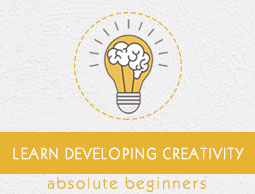
- Developing Creativity - Home
- Developing Creativity - Introduction
- Developing Creativity - Techniques
- Characteristics of Creative Thinkers
- Organizations Treasure Creativity
- Developing Creativity - Case Study
- Brainstorming
- Storyboarding
- Employee Creative Thinking
- Computer-Aided Creativity
- Software Visualization Tools
- Spatial Representation Tools
Developing Creativity - Storyboarding
Storyboarding is a creativity technique that often uses stick diagrams to explain a scenario, so that the planning for that scenario can be done. Just like brainstorming, this is also mainly employed by groups. It requires a moderator and takes place in a group of 8-12 people. The moderator will first arrange the ideas obtained from the brainstorming session in a logical order on a white board.
A story will be created around it with the maximum interconnection of ideas and different pieces. The pictorial representation helps keep all factors in front of your eyes which helps in interconnecting different factors while searching for solutions. Every phase has a Critical Section in which participants discuss their story board.
The story boarding process includes four phases −
Planning − This phase begins with the issues clearly spelt out and defined by the moderator. He then takes a piece of paper and gets ready to take down notes of the participants.
Ideas − In this phase, the ideas are put on and different plans for people are arranged as per the sequence of the new ideas.
Organization − During this phase, the participants decide who among them is going to implement the finalized solutions and the timing of the plan to implement.
Communication − In this phase, the participants are asked to share their storyboard with all the members in the organization. Through this process, they can use match-stick figures, balloon sketches and flowcharts to give a visual graphics to their idea.
In the next section, we will discuss the excursion technique and its benefits.
The Excursion Technique
This is a very effective method of persuading a group of people to design and develop new thought patterns to address unique situations and to formulate strategies based on their analyses.
This process usually involves five steps −
The First Step − The instructor asks the participants to take an imaginary journey to a place that seemingly has no connection with the issue at hand. Some of such places could be a museum, jungle or another planet, etc. After the journey is over, the participants need to draw 8-10 images based on their experience of that place.
The Second Step − The consultant asks participants to draw similarities and establish relationships between the images of their imaginary excursion, and the real-life issues they are presently facing in their scenario.
The Third Step − The participants are now instructed to analyze the connections between the problems and the analogies and identify the ones that are the closest and most distinctly linked with all the factors.
The Fourth Step − Participants share their experiences from their imaginary journey with their team-mates about what they saw, whom they interacted with, what analogies they drew and their solutions.
The Fifth Step − Like brainstorming, participants discuss each others ideas and find out a common solution to the issues, and a common narrative that can include all their ideas.